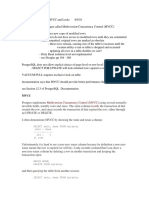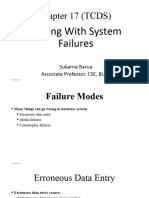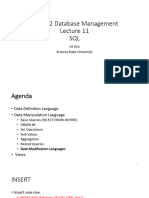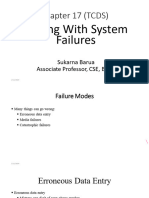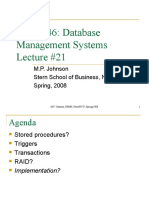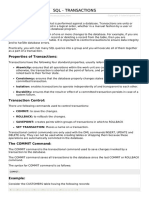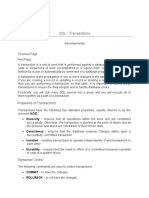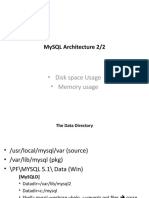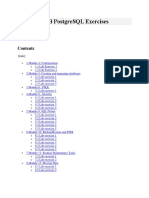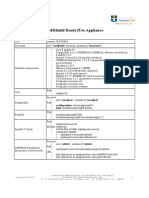0% found this document useful (0 votes)
57 views90 pagesMVCC
This document summarizes how Postgres implements Multiversion Concurrency Control (MVCC) to allow for high concurrency during read and write operations. It explains that MVCC uses snapshots to determine which rows are visible to queries based on transaction commit timestamps. It also provides examples of how INSERT, DELETE, UPDATE operations work in MVCC by setting xmin and xmax values to mark transaction boundaries for rows. Aborted transactions also leave markers so their rows remain invisible to other transactions.
Uploaded by
Stephen EfangeCopyright
© © All Rights Reserved
We take content rights seriously. If you suspect this is your content, claim it here.
Available Formats
Download as PDF, TXT or read online on Scribd
0% found this document useful (0 votes)
57 views90 pagesMVCC
This document summarizes how Postgres implements Multiversion Concurrency Control (MVCC) to allow for high concurrency during read and write operations. It explains that MVCC uses snapshots to determine which rows are visible to queries based on transaction commit timestamps. It also provides examples of how INSERT, DELETE, UPDATE operations work in MVCC by setting xmin and xmax values to mark transaction boundaries for rows. Aborted transactions also leave markers so their rows remain invisible to other transactions.
Uploaded by
Stephen EfangeCopyright
© © All Rights Reserved
We take content rights seriously. If you suspect this is your content, claim it here.
Available Formats
Download as PDF, TXT or read online on Scribd
/ 90



